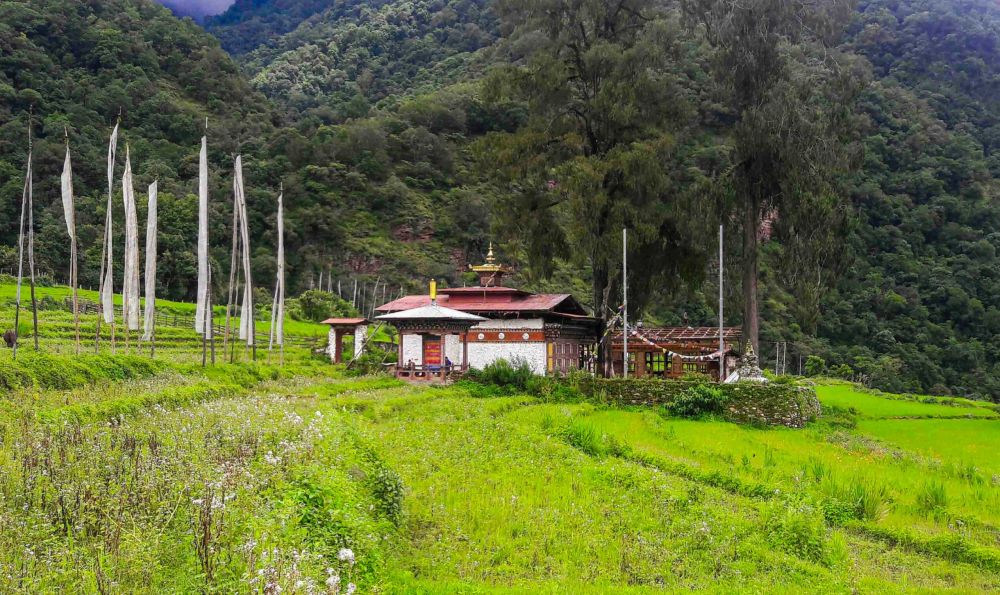

Tucked away in the heart of Bhutan, Trongsa is a town steeped in tradition and rich history. Among its many cultural gems, Nabji Lhakhang stands out as a significant religious and historical site that has drawn the attention of local and international tourists alike. Understanding the allure of Nabji Lhakhang requires a journey back in time and a look at the evolving trends in Bhutanese tourism that spotlight places like this ancient temple.
The story of Nabji Lhakhang is intertwined with the introduction of Buddhism in Bhutan. It is believed that the temple dates back to the 8th century and was constructed by Guru Rimpoche, a revered Buddhist saint who played a crucial role in spreading Buddhism across the Himalayas. The temple serves as a testament to the saint's journey and efforts to pacify a region once riddled with conflicts. Nabji Lhakhang, therefore, symbolizes peace and spiritual harmony.
Aside from its religious significance, Nabji Lhakhang is famous for its intricate architecture and sacred artifacts that have been carefully preserved over the centuries. The temple walls are adorned with beautiful murals depicting various aspects of Buddhist lore, and the inner sanctum houses statues that are of great importance to Bhutanese Buddhists.
For many years, Bhutan remained a secluded kingdom, limiting its exposure to international tourism. However, the government's adoption of a sustainable tourism policy in the 1970s marked a new era. By emphasizing 'High Value, Low Impact' tourism, Bhutan has managed to protect its cultural heritage sites, including Nabji Lhakhang, while welcoming visitors from around the world.
Initially, visitors to Nabji Lhakhang were mainly Buddhist pilgrims and a few intrepid travelers. With the introduction of the Bhutanese government's sustainable tourism policies, access to the temple became more controlled and organized. This approach has ensured that tourists experience Nabji Lhakhang while honoring its cultural and spiritual significance.
In recent years, there has been a growing interest in experiential and cultural tourism, with travelers seeking authentic experiences that allow them to connect with the local way of life. Bhutan's unique approach to tourism development has catered to this trend perfectly, offering programs such as village homestays, cultural festivals, and spiritual retreats.
Nabji Lhakhang is part of the Nabji-Korphu Trek, a community-based trekking route that allows visitors to experience both the natural beauty of Bhutan's landscape and the rich cultural heritage that the temple embodies. Trekking through the region gives travelers an opportunity to interact with local communities, participate in traditional agricultural practices, and appreciate the country's efforts in conservation.
Moreover, guided tours organized by licensed Bhutanese tour operators offer a more in-depth exploration of Nabji Lhakhang. These tours typically provide visitors with historical context, stories, and insights that enrich the visitor experience, ensuring that the importance of the site is conveyed and esteemed.
The ethos of Bhutanese tourism aligns with global sustainability goals, and Nabji Lhakhang stands as a shining example. The preservation of its sacred art, architecture, and religious practices are paramount, and the limited number of visitors allowed each year helps to maintain the site's sanctity and serenity.
Responsible tourism practices encourage visitors to minimize their environmental impact, respect the local culture, and engage with the community in a way that supports economic development while safeguarding traditional values. As Bhutan continues to develop its tourism sector, it's likely that Nabji Lhakhang will remain an essential destination for those looking to immerse themselves in the spiritual heart of the country.